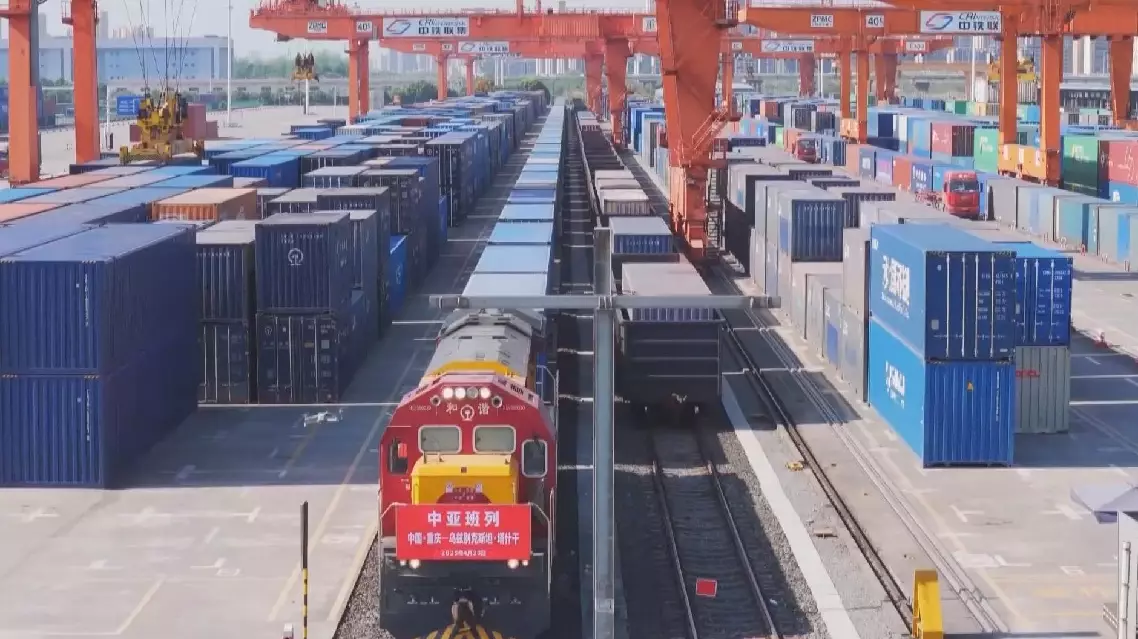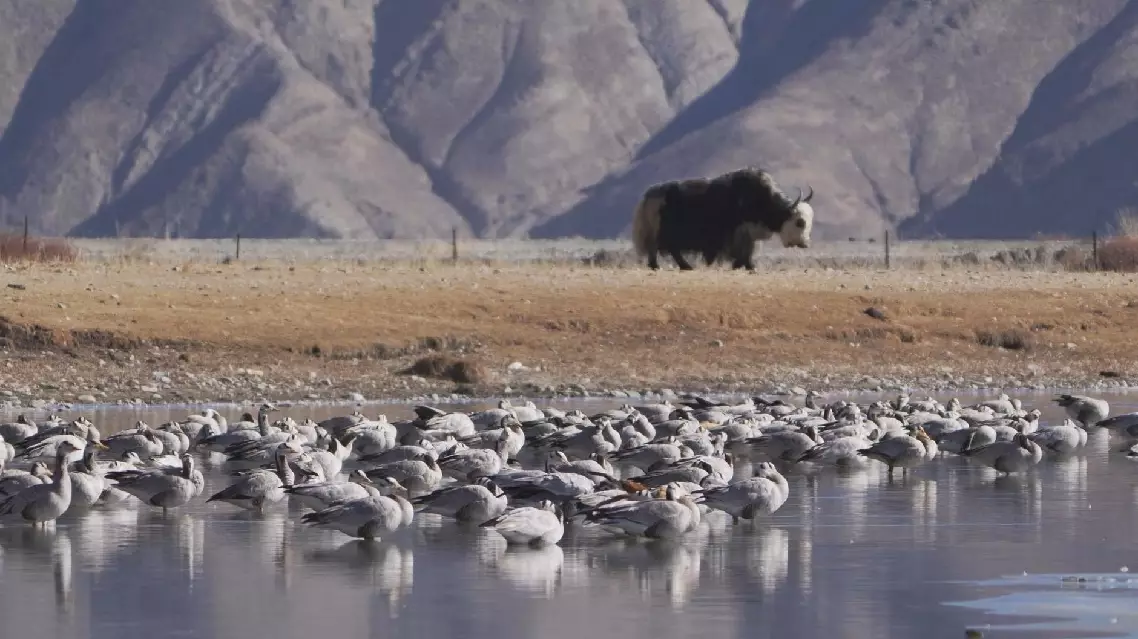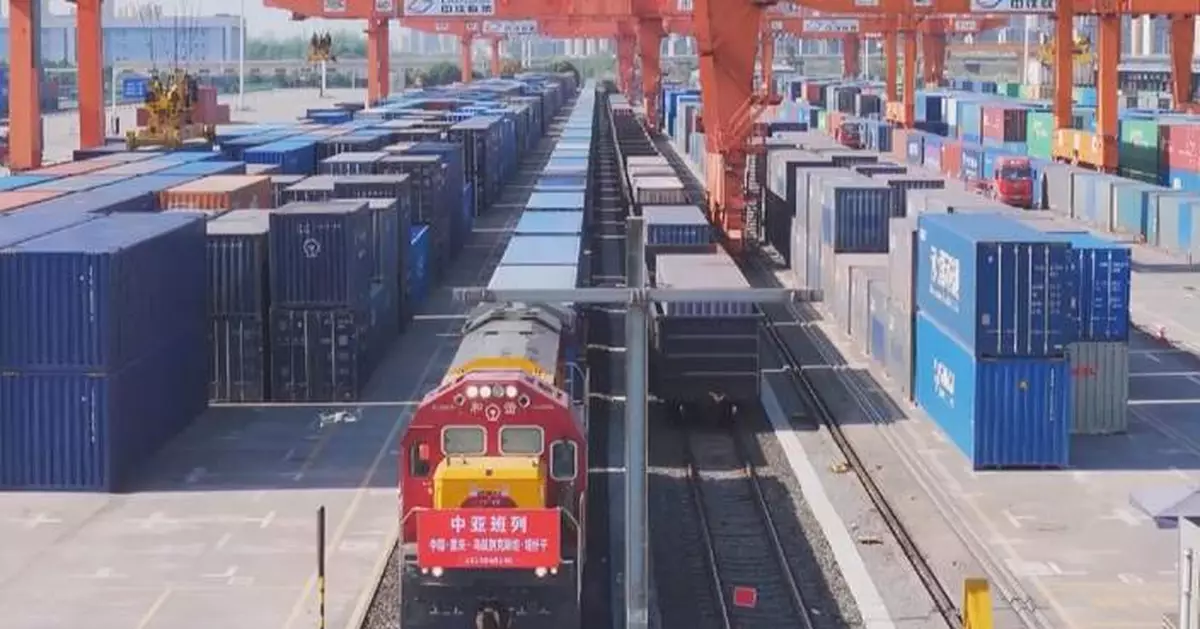Southwest China's Chongqing launched its first regular freight train route to Central Asian countries on Sunday morning, with a freight train carrying polyester chips manufactured in the municipality heading for Uzbekistan.
Departing from Chongqing's Tuanjiecun Station, the train is set to reach Tashkent, Uzbekistan's capital in around 12 days, covering some 4,700 kilometers. It will exit China through Horgos Port in Xinjiang and pass through Kazakhstan.
According to the China Railway Chengdu Group Co., Ltd, each month two trains are scheduled to start from Chongqing to Central Asia.
Such regular services, with fixed timetables, routes, and frequencies, could ensure fast customs clearance, timely transportation, and reduced costs, thus guaranteeing better quality cross-border transportation.
It is believed that the regular train route could reduce the transportation duration between Chongqing and Central Asia by 30 percent, providing enhanced cross-border logistics support for foreign trade enterprises in southwest China.
In recent years, Chongqing has been striving to elevate itself into a comprehensive inland hub, with the number of China-Europe freight trains and those heading to Central Asian countries from the city, as well as cargo volumes, both growing.
As of February, more than 18,000 trains covering over 50 regular routes linking the city with European and Central Asian countries had been dispatched, reaching over 100 hub cities and regions across Asia and Europe.
Chongqing is a provincial-level, mountainous municipality with both the largest jurisdictional area and population of all Chinese cities.

Southwest China's Chongqing launches regular freight train route to Central Asia
Black-necked crane, a rare species under China's first-class national protection, has been living in harmony with local residents over the past years in their plateau paradise -- southwest China's Xizang Autonomous Region, thanks to the ecological conservation efforts made by local authorities and the care provided by the locals.
Every autumn, the village of Jianda in Shigatse City welcomes some distinguished guests -- over 1,000 black-necked cranes dressed in their elegant black-and-white "tuxedos".
Jianda is their exclusive "winter palace", where they are looked after by 75-year-old Tenzin. He has born witness to the village’s time-honored proud tradition of harmony with nature.
In this model of "human-crane cohabitation", the cranes stand guard as the farmers till their fields and they dance while the livestock graze on pasture. And in the golden glow of sunset, the village's chimneys puff out smoke to a chorus of crane calls, in celebration of a timeless pact between humans and birds.
Every year, when the wintering season ends and the cranes prepare to leave Jianda, Tenzin is always reluctant to part with his pets.
"They're leaving for Changtang [Plateau] again. I can't help but feel a bit reluctant to see them go," said Tenzin.
The black-necked crane, dubbed the "panda of birds", is the world's only crane species that breeds and lives on plateau. They mainly inhabit swamps, lakes, and floodplains at an altitude of 2,500 to 5,000 meters. In China, black-necked cranes are mainly distributed across the Qinghai-Xizang Plateau and the Yunnan Guizhou-Plateau.
Their food includes plant leaves, rhizomes and algae. The presence of the black-necked cranes is a sufficient indicator of the sound environment of the plateau wetland ecosystem.
Xizang has always prioritized eco-environmental conservation and kept reminding itself that conserving the ecology of the Qinghai-Xizang Plateau is the greatest contribution to the survival and development of the Chinese nation, said a white paper issued by the Chinese government in March.
The region is committed to maintaining harmony between humanity and nature in modernization. It also strives to continuously improve eco-environmental governance and protect biodiversity on the Qinghai-Xizang Plateau, according to the white paper.
Xizang has established 47 nature reserves of all kinds, covering 412,200 square kilometers. According to the second survey of terrestrial wild animals, there are 1,072 terrestrial wild vertebrate species and 246 wild animal species under special state protection in Xizang.

Black-necked cranes coexist peacefully with humans in their plateau paradise






















































